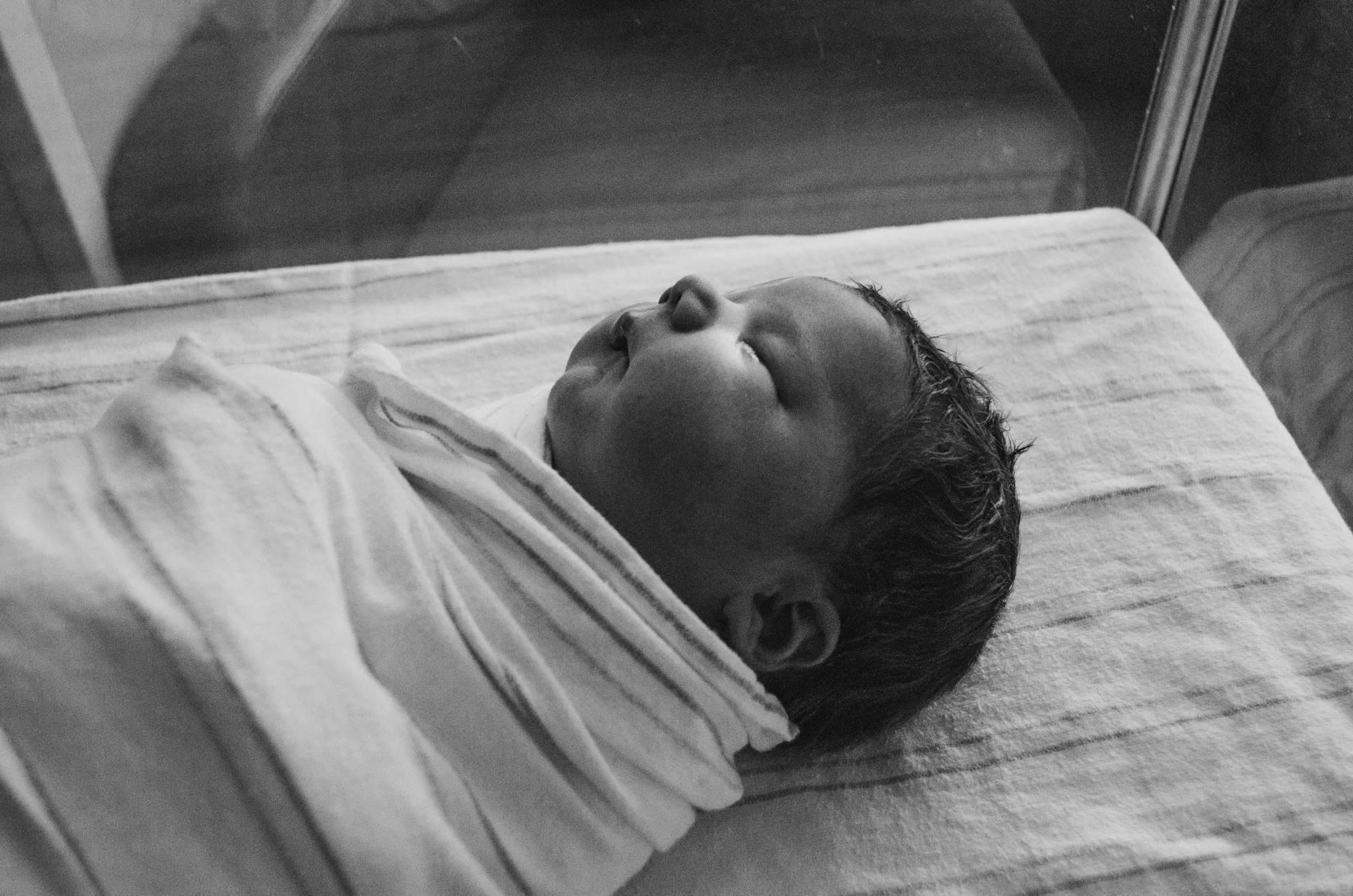The world of parenthood is full of unpredictable moments. For many, witnessing a tiny chest rising and falling a bit too quickly—a faint wheeze in the middle of the night, or the anxious eyes of a baby struggling to nurse—sparks a unique worry. Infant asthma raises countless questions: What are those cryptic warning signs? Could a simple cold spell lead to something more challenging? How can families keep their child safe, well, and happy in a world full of triggers and uncertainties? This comprehensive exploration will untangle the tangled web of infant asthma—from the earliest symptoms to the latest in scientific research—while offering an empathetic, practical approach to everything parents wish they understood from the very beginning.
Understanding Infant Asthma: When Baby Breaths Become a Puzzle
You glance at your child and suddenly something feels… off. In infants, asthma operates in ways both subtle and dramatic—rapid breathing, tiny noses flaring, faint whistles with every exhale. The basics are deceptively simple: Infant asthma refers to ongoing inflammation and narrowing of the small airways, causing breathing to become laborious. Yet around 6 out of 10 little ones will see symptoms vanish after age three, a fact both reassuring and puzzling for worried parents.
But what defines the unlucky few for whom asthma lingers? Imagine being a baby boy with a birth weight slightly under the curve, or having a sibling with allergies, eczema, or family history of asthma. Small genetic factors and environmental influences converge silently. Wheezing, a persistent dry cough, labored belly breathing, or even cyanosis (blueish lips or nails) may sneak in, sometimes triggered by something as benign as a common viral infection. Unlike older children, infants rely on their families to detect these nuanced cues. A cough or a restless night is never “just” a phase—it could be the body’s cipher for underlying airway inflammation.
Types and Manifestations: Asthma Is Never One-Size-Fits-All
Is every cough a portent? Not every infant with breathing issues has asthma, and not every asthma flare looks the same. Patterns emerge:
- Intermittent asthma dominates: attacks arise, often after a viral cold, then vanish; the days between are eerily symptom-free.
- Persistent asthma makes its presence known even in the quiet moments, with nighttime coughs, subtle chest discomfort, or lingering congestion.
Pediatricians peel back the layers by exploring a child’s allergen exposure, food sensitivities, eczema, and environmental factors like pet dander or smoke pollution. Each child’s journey is relentlessly individual.
Causes and Risk: Genetics, Environment, and the Domino Effect
Why does infant asthma take hold in one child and not another? Here, science pulls back the curtain. Genetics lie at the heart: families marked by atopy—the medical term for a predisposition to develop allergies—set the stage. Environmental players join the cast: dust mites, lurking in bedding; mold spores; industrial pollution or that cigarette smoldering in a distant room. Even before birth, maternal nutritional deficiencies (such as low vitamin D) and prenatal smoke exposure can heighten risk. Babies born premature, or with low birth weights, carry additional susceptibility—their lungs are developing, unready for the outside world’s chemical ballet.
Perhaps most unpredictably, viral infections act as catalysts. The notorious respiratory syncytial virus (RSV) and human rhinovirus are notorious for triggering wheezing—a harbinger of infant asthma in some, a one-off episode in others.
Detecting the Invisible: Symptoms That Speak Volumes
You might ask, “How can I tell asthma apart from a routine sniffle or cold?” Parents become detectives, trained to spot subtle details others might miss:
- Abnormally rapid, shallow, or labored breathing
- Nasal flaring—nostrils visibly widening with each inhale
- Skin pulling in between or under the ribs (“retractions”)
- Tiring with feeds, or abandoning a bottle midway
- Persistent, staccato-like cough, especially at night
- Sudden pallor, bluish lips, or an exhausted demeanor
Blink, and the moment may pass. Wait too long, and the stakes rise. Three or more episodes of respiratory distress, a cough that lingers for weeks, or recurrent breathing troubles after excitement or crying—these are signals to act. Severe symptoms, like cyanosis or lethargy, are medical red flags warranting immediate care.
How Is Asthma Diagnosed in Infants? Medical Art Meets Science
Here’s where the detective work intensifies. Infants cannot perform standard lung function tests. Instead, diagnosis is made by piecing together a pattern of symptoms, a child’s response to inhaled medications (like bronchodilators), and family medical history. It quickly becomes an intricate puzzle: Is this truly asthma? Could it be bronchiolitis, gastroesophageal reflux disease (GERD), or a structural airway issue? The first episode of wheezing is more often bronchiolitis, especially if triggered by RSV.
To clarify the picture, testing might include:
- Allergy prick tests—miniature scratches exposing skin to potential allergens
- Chest X-rays—primarily to exclude other pulmonary conditions
- Bloodwork—in some cases, to check markers like eosinophils (cells associated with allergy and asthma)
Persistent or ambiguous cases often prompt referral to pediatric pulmonary or allergy specialists—those adept at unraveling complex cases.
Asthma Management: Clearing a Pathway to Easier Breathing
Families soon become stewards of a delicate balance; daily routines orbit the need to avert and treat sudden breathing troubles. A tailored asthma action plan—simple, visible, and shared with every caregiver—becomes indispensable. This roadmap flags when to increase treatments, use rescue medication, and seek emergency attention.
The pharmacological lineup, while intimidating for some, is life-changing for many:
- Short-acting beta-agonists (SABAs; e.g., albuterol) for immediate symptom relief
- Inhaled corticosteroids (ICS; e.g., budesonide, fluticasone) to control ongoing airway inflammation
- Leukotriene receptor antagonists (LTRAs; e.g., montelukast) for select cases
Precision in medication delivery is essential. Spacer and mask systems, or nebulizers, help get medication straight to tiny, working lungs—and technique matters, so periodic reviews with healthcare teams are wise. Rescue medication at the first sign of an attack, environmental vigilance, and regular medical follow-up become the pillars of daily management.
The Art of Prevention: Keeping Triggers at Bay
What does prevention look like in the real world? A string of practical measures:
- Absolute avoidance of tobacco smoke—not just in the shared air, but even in residual scents on clothing. “Thirdhand smoke” can exacerbate infant asthma symptoms.
- Cleaning routines: wash linens and plush toys in hot water; deploy HEPA filters and cover mattresses.
- Keep humidity in check, banish mold, ensure proper ventilation.
- Monitor daycare or shared environments—communicate triggers clearly to all caregivers.
- Breastfeeding, if possible, may confer some protection by supporting immune maturity and reducing severe respiratory infections.
- Rethink exposure to pets or outdoor pollution if symptoms persist.
When household members smoke, quitting (with true support and resources) remains the single most effective way to shield an infant’s developing airways.
Everyday Life and Family Dynamics: Asthma Without Fear
The learning curve is steep and relentless. Conscientious families shape their lives around the peaks and valleys of infant asthma. Coordinated routines matter—from medication reminders to keeping an updated asthma action plan visible at all times. All caregivers—parents, babysitters, daycare professionals—need to feel empowered to act swiftly if symptoms spike. Even siblings may need reassurance and simple inclusion, transforming concern into empowerment.
Physical activity? Reassuringly, most children with well-managed asthma can—and should—enjoy active play, with only rare and temporary restrictions. Keeping the child’s world open and supportive, rather than limited by fear, is paramount.
Long-term Outlook: Will Asthma Persist or Fade?
A common, heart-pulling question: “Will my infant outgrow asthma?” In many cases, yes—especially if wheezing episodes are linked only to viral infections and if allergy is absent. But certain children—those with a strong allergic background or persistent symptoms between infections—carry a greater likelihood of ongoing issues.
What matters is careful, consistent control: regular tracking, adjusting medications as a child grows, and ongoing visits with the healthcare team. Left unchecked, chronic inflammation can subtly impact long-term lung function—a strong argument for vigilant daily care.
Allergy Assessment: Detecting Hidden Triggers
You might wonder: is there a simple way to uncover that hidden trigger? Allergy investigations, specifically skin prick tests, reveal sensitivities with remarkable precision. Detecting—and then limiting exposure to—dust mites, pet dander, molds, or food allergens transforms daily management and cuts down on future attacks.
Latest Science: Innovations and Promising Horizons
Science never stands still, and the last few years have radically redefined the field of infant asthma. Personalized medicine now distinguishes between children whose wheezing is allergy-driven, and those whose troubles are linked mainly to viral triggers. Blood tests evaluating eosinophils or broader allergy panels help decide who will benefit the most from regular inhaled corticosteroids.
Take the innovations in inhalation devices: new spacers and masks improve medication delivery, tailored to even the smallest faces. Some emerging research examines whether short, early courses of corticosteroids or newer antibiotics (like azithromycin) might head off severe episodes in selected cases—yet these remain the frontier, not the rule.
Behind all this, robust studies continue to deepen our grasp of genetics, the immune response, and even the microbiome—opening doors to better prevention and future therapies.
Key Takeaways
- Infant asthma defies simple stereotypes—it often waxes, wanes, and, in most cases, fades with time.
- Early detection, attentive environment management, and consistent treatment allow healthy development while minimizing hospital visits and long-term risks.
- Genetics and environment intertwine: exposure to tobacco smoke, allergens, viruses, and even prenatal nutrition help shape asthma risk.
- Diagnosis relies on vigilant monitoring, detailed family histories, and, if needed, expert evaluation.
- Evidence-based treatments—especially inhaled corticosteroids and well-timed rescue inhalers—form the backbone of effective care.
- Allergy testing illuminates hidden threats and guides daily avoidance strategies.
- Building a smoke-free, allergen-aware home, and involving all caregivers ensures unified support and quick action in emergencies.
- With a comprehensive, science-backed approach, most infants with asthma thrive, achieve normal activities, and reach their full potential.
Remember, resources and professional expertise exist to assist families at every step. For ongoing advice, personalized guidance, and free health questionnaires for your child, you can download the Heloa app—an ally for informed, confident parenting in the journey with infant asthma.
Questions Parents Ask
Can teething worsen asthma symptoms in infants?
Teething can be a challenging phase for both babies and parents, sometimes causing fussiness, drooling, or mild inflammation in the gums. While teething itself is not a direct trigger for asthma, it can sometimes coincide with increased saliva or even mild viral infections, which may temporarily amplify existing respiratory symptoms. If your child’s asthma seems worse during teething, it’s likely due to minor illnesses that often appear at the same time, rather than teething itself. Rassurez-vous, this is common. N’hésitez pas à surveiller attentivement les symptômes et à consulter votre pédiatre si vous notez des changements inhabituels ou persistants.
Are there differences between infant asthma and childhood asthma?
Indeed, asthma may present differently depending on your child’s age. In infants, asthma can be harder to diagnose because signs like coughing or wheezing may overlap with other conditions, and babies can’t describe what they feel. The airways in infants are also smaller, so even slight swelling might cause more pronounced symptoms. As children grow, their symptoms and medication needs often change, and some may even see their symptoms disappear over time. Each age brings its own set of challenges, so un accompagnement régulier auprès d’un professionnel de santé aide à ajuster les soins selon les besoins de chaque enfant.
How can I help my infant sleep better if they have asthma?
Sleep can be disrupted for infants with asthma, especially during flares. To help your baby rest more comfortably, try elevating the head of their mattress slightly (never with loose pillows in the crib), maintain a calm and allergen-free sleep environment, and follow the treatment plan prescribed by your healthcare provider. Using a humidifier—if it’s kept very clean—can sometimes help, but it’s important to avoid excessive humidity, which could encourage mold. Rassurez-vous, many families find gentle routines and clear communication with their doctor make a positive difference in sleep quality. If your baby’s breathing seems labored during sleep or you notice any color change around the lips, it’s always best to seek prompt medical advice.
Further reading:









